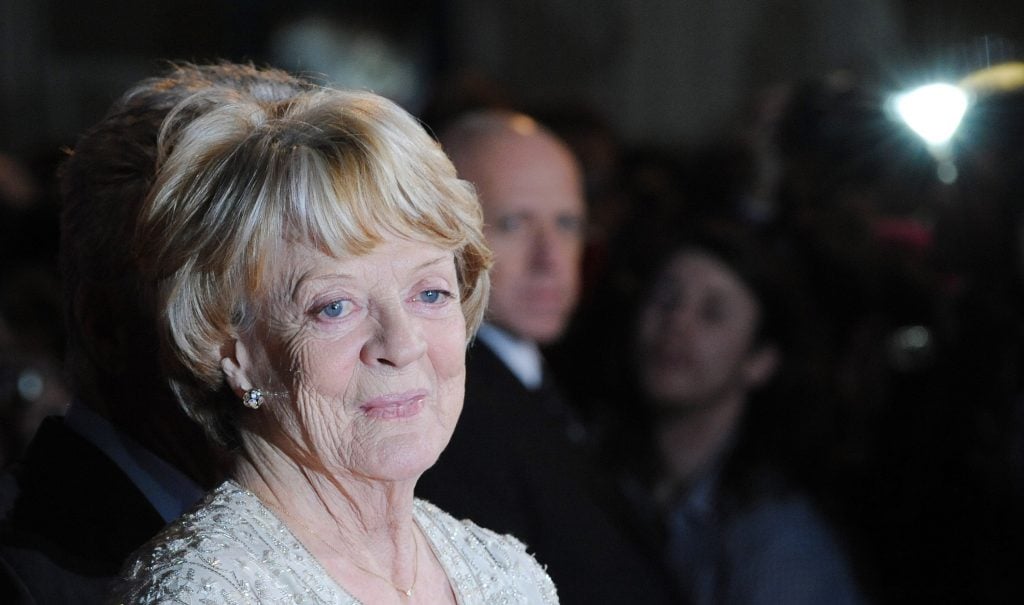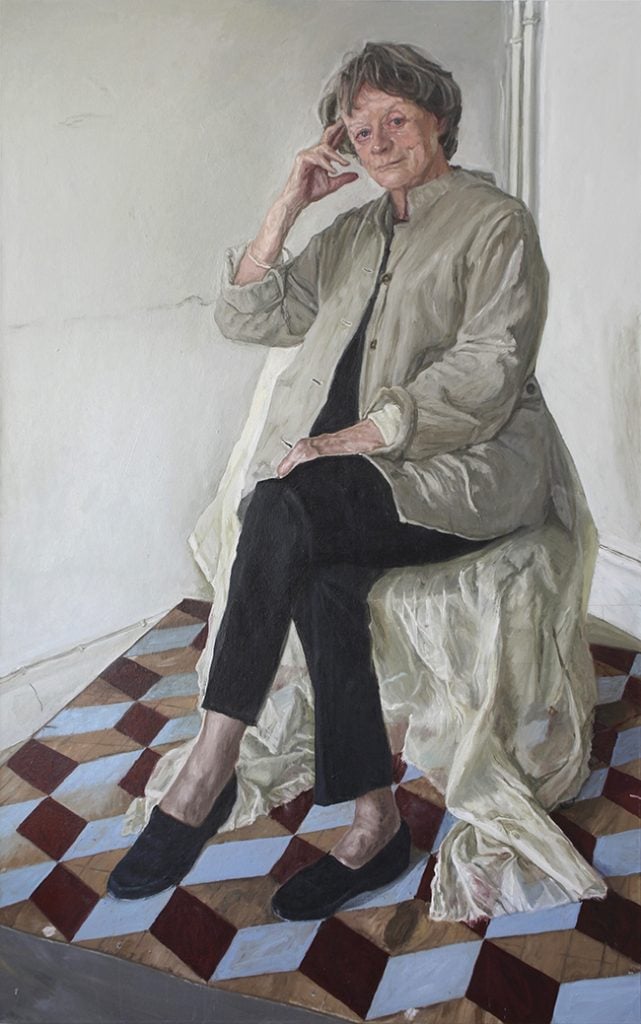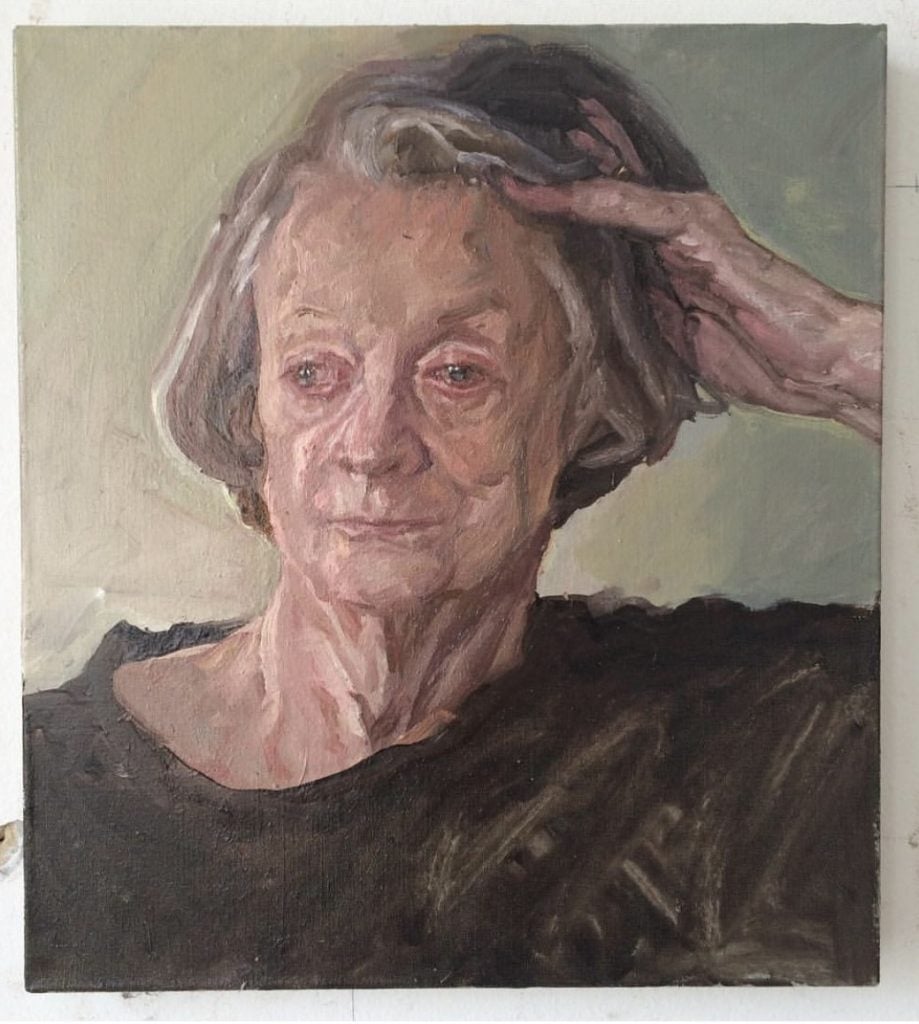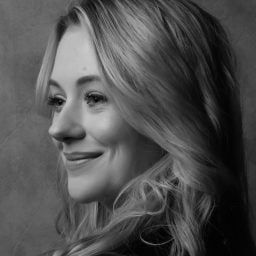Art World
‘She Used Her BAFTA as a Doorstop’: Maggie Smith’s Portraitist on Capturing an Icon
Artist James Lloyd said it was an 'honor' to paint one of the most celebrated and prolific British actors.

Artist James Lloyd has captured the likenesses of some of the most famous British public figures in recent memory, from fashion icon Paul Smith to Queen Elizabeth. But when it came to painting the late Oscar-winning actor Maggie Smith as a commission for London’s National Portrait Gallery, he said the experience was “truly memorable.”
Known for portraying strong, complex characters, such as Jean Brodie from The Prime of Miss Jean Brodie, Minerva McGonagall in the Harry Potter series, and Violet Crawley in Downton Abbey, Smith was a force both on screen and on stage, and her long and varied career made her into a cultural treasure in the U.K. and beyond. She died on September 27, aged 89.
As one of the most celebrated and prolific British actors of her time, Smith reached cultural icon status—she was made a Dame by Queen Elizabeth in 1990 for her contributions to acting and she is one of just 14 actresses to have achieved the “Triple Crown of Acting,” winning the highest accolades for film, television, and theater in her life. But she remained down to earth and dedicated to her craft. Lloyd’s portrait, completed in 2012, captures that duality: The woman behind the roles and the legacy she leaves behind. In the portrait, Smith sits on a draped sheer fabric, one hand propping up her head in a contemplative pose, while the other rests gently on her lap. The room around her is bare, with exposed pipes lining the walls and the tiled floor providing the only hint of color in the otherwise neutral setting.

James Lloyd, Maggie Smith (2012). Courtesy of the artist.
“She came dressed [for the portrait] in very normal clothes,” Lloyd recalled in a Zoom interview from his London studio. The five sittings for the portrait took place at the actor’s home in 2011, during breaks from Smith’s filming commitments, which then included The Best Exotic Marigold Hotel and Quartet. The artist said it was comfortable and personal, and Smith was a generous host, offering him coffee.
Yet, as a public figure, “she’s far from normal,” he said. “I wanted to show that contrast.” Lloyd balanced her everyday appearance with her larger-than-life public image by placing her on a trompe-l’oeil platform, giving the composition a sense of grandeur.
Smith was perhaps less interested in the public’s elevated perception of her. She notoriously didn’t show up for her first Oscar win in 1970 for her role in The Prime of Miss Jean Brodie because she was busy with a play in London at the time. Lloyd remembers being asked by the actor to shut a door in her flat during one of their sittings. “I went to pick up the doorstop and realized it was her BAFTA [award]!” he said. “She was using it to hold the door open.”

Maggie Smith leaning up on chair in a scene from the film “Travels With My Aunt,” 1972. Photo: Metro-Goldwyn-Mayer/Getty Images.
“Whenever I mentioned I was painting her, people would say, ‘Oh, I love her. She’s amazing,’” Lloyd said, remembering her humility. “I thought she should know that, but when I told her, she just brushed it off.”
One of Smith’s most endearing traits, according to Lloyd, was her penchant for referring to her own likeness in the third person. “She’d look at the [in-process] painting and say, ‘Oh, look at her,’” Lloyd said, laughing.
While Smith was unpretentious, funny, and warm, Lloyd said he also noticed a “certain melancholy” during their sittings. “When she sat for me, she naturally held herself in a particular way, and I just went with that,” he explained, adding that her large eyes had a naturally soft, sometimes sad look to them.
“Sometimes [she would] drift off into her own thoughts,” he said. “But she was a great sitter—completely patient and didn’t interfere with the process.”

James Lloyd’s portrait of Maggie Smith for the Garrick Club. Courtesy of the artist.
The commission for the portrait, which was finished in 2012, came through a process of selection by the National Portrait Gallery, but Smith herself also played a role in selecting the artist.
“I’d already discussed it with her, and I think she chose me,” Lloyd said. “She liked the painting I did of Paul Smith, which is still up, and she wanted me to do hers, too.” Lloyd had previously painted a more informal portrait of the actor, a smaller canvas for the Garrick Club, executed in his studio in south London.
“Obviously, I wanted to have a portrait in the National Portrait Gallery,” he admitted. “But to be selected to paint Maggie Smith—it’s an honor. She was very open and honest. And I hope that comes across in the paintings.”





